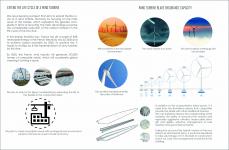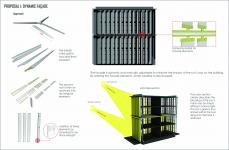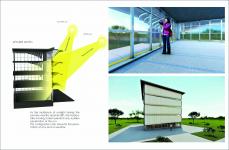In the light of the technological and industrial achievements of the century, the planet finds itself in great need of satisfying the increasing demand for energy, as one of the important drivers of the development of societies. Hence the incentive to constantly reflect on new energy production techniques.
Indeed, industrial civilisation was built around the exploitation of coal at the end of the 18th century, then oil in the middle of the 20th century. Since the first oil crisis in 1973, industrialised countries have opted for renewable energies in order to anticipate the drying up of fossil fuel production, which is also very polluting and therefore a threat to the survival of our planet. Renewable energies are defined in a simplified way as a mode of energy production based on unlimited resources (solar, hydroelectric, wind, biomass, geothermal, etc.).
In view of the almost non-polluting nature and high profitability of wind energy, many countries are expected to fall under its spell and will therefore opt for a large stake in its production, following the example of Germany, England, Spain and France in Europe. France, a nuclear energy pioneer (70.6 % of its electricities productions is from nuclear), will set itself the task of reducing this figure to 50% in order to replace it with renewable energies.
With a favourable wind potential, France made a big bet on wind energy by implanting since 1991, a significant number of wind farms which as of 2020 amounted to 1380 farms; totalling nearly 8000 wind turbines with an annual production of 18,310 MW on June 31, 2021 (Offshore/onshore wind newspaper). This placed France fourth in Europe and ninth in the world. However, the sector seems to have difficulties in fully integrating itself into a circular economy process which would like to see a complete cycle of the chain up to the end of life of the works with complete recycling of the latter.
The lifespan of a wind turbine is 20 to 30 years. But for some time now, old wind farms have been dismantled before reaching this age due to the strong demand for profitability and the need to accelerate the energy transition, which requires more green energy production. However, one glaring fact is that the structure is not completely recyclable. To date, a wind turbine is 90% recyclable and the remaining non-recyclable part concerns the blades, which due to their composition in composite materials do not play the game of durability. After dismantling, the blades very often go to landfill or burial, mechanical and chemical recycling (knowing that according to Vestas, the Danish wind turbine manufacturing company, only 30% are recyclable), the renewal of new farms and finally reuse. This reuse, which France has not yet opted for effective means to satisfy.
A study by the Danish agency Vestas shows that 10% of the total waste of fibre reinforced composites in Europe comes from wind turbine blades. However, thousands of blades will be dismantled in the forthcoming years. Considering this challenge at France’s level, it is worth wondering what design solution should be implemented for efficient and sustainable reuse of wind turbine blades with the least environmental impact.
In the ligth of the above, a series of analyses have been conducted to draw out the essence of a concrete approach: the reuse of wind turbine blades to improve the summer comfort of buildings by proposing dynamic facades.
2022
Our main material is the wind turbine blade, which is made of composite materials.
These composites give the blade important capacities.
The material is waterproof, able to withstand the seasons and especially aggressive climates, has impeccable strength and rigidity, effective weather management and good thermal inertia.
Team Project :
- Najmeh Karami
- Takam Kenmogne Sidoine Constant
Supervisor : Mrs Milena Stefanova
WIN-WIND ENERGY by Sidoine TAKAM in France won the WA Award Cycle 41. Please find below the WA Award poster for this project.

Downloaded 0 times.
Favorited 4 times





















